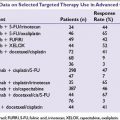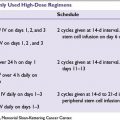FIGURE 40.1 Common tools for assessment of pain intensity. (Adapted from the American Geriatrics Society [AGS] Panel on Chronic Pain in Older Persons. The management of chronic pain in older persons. J Am Geriat Soc. 1998;46:635-651; Gloth FM III, Scheve AA, Stober CV, et al. The functional pain scale (FPS): reliability, validity, and responsiveness in a senior population. J Am Med Direct Assoc. 2001;3:110-114; and Gloth FM III. Assessment. Handbook of Pain Relief in Older Adults: An Evidence-Based Approach. Totowa, NJ: Humana Press; 2003:17.)
TREATMENT
■Severe pain should be considered a medical emergency; timely and aggressive management should be provided until the pain becomes tolerable. Aggressive pain management, with the goal of attaining maximal functional ability, is especially important with cancer patients.
■Sedatives and anxiolytics alone should not be used to manage pain as they can mask the behavioral response to pain without providing analgesia.
■NSAIDs or acetaminophen should be used to manage mild to moderate pain, unless contraindicated.
■Opiates are the foundation of management for severe pain.
■For cancer-related anxiety and depression, treatment approaches include tricyclic antidepressants, SNRIs, SSRIs, spiritual, and psychosocial intervention.
OPIATES
■Opiate therapy should be tailored to each patient, based on the type and expected duration of pain, as it is difficult to predict which patients will achieve adequate analgesia or develop intolerable adverse effects from a given opiate.
■Tolerance and physical dependence are expected with long-term opiate treatment and should not be confused with psychologic dependence (addiction).
■Equianalgesic doses of oral opiates (Table 40.1) should be prescribed when necessary.
■Begin administration of opiates at lowest effective dose and titrate as necessary. No maximal therapeutic dose for analgesia has been established.
■Immediate-release opiates (mu receptor agonists) are short-acting and may be appropriate for acute incidental pain, or to initiate and titrate opiate therapy. Long-acting opiates are used around the clock for baseline pain and to maintain analgesia.
■Methadone can be an excellent agent for management of pain, but utilization or consideration should prompt referral to a pain specialist.
■Titration of opiates: Start at lower doses and titrate as tolerance to side effects develops. If pain persists titration upward by dose increments of 30% to 50% may be necessary to achieve adequate analgesia. For severe uncontrolled pain (extremis), increase the dose by up to 100% and reassess at peak effect.
■Early side effects often improve or resolve with repeated doses. With the exception of constipation, tolerance often develops rapidly to most of the common opiate-related adverse effects.
■Common adverse effects of opiates include constipation, sedation, nausea/vomiting, pruritus, sweating, dry mouth, and weakness.
■Uncommon adverse effects of opiates include dyspnea, urinary retention, confusion, hallucinations, nightmares, myoclonus, dizziness, dysphoria, and hypersensitivity/anaphylaxis.
Long-Term Opiate Use
■
Stay updated, free articles. Join our Telegram channel

Full access? Get Clinical Tree







